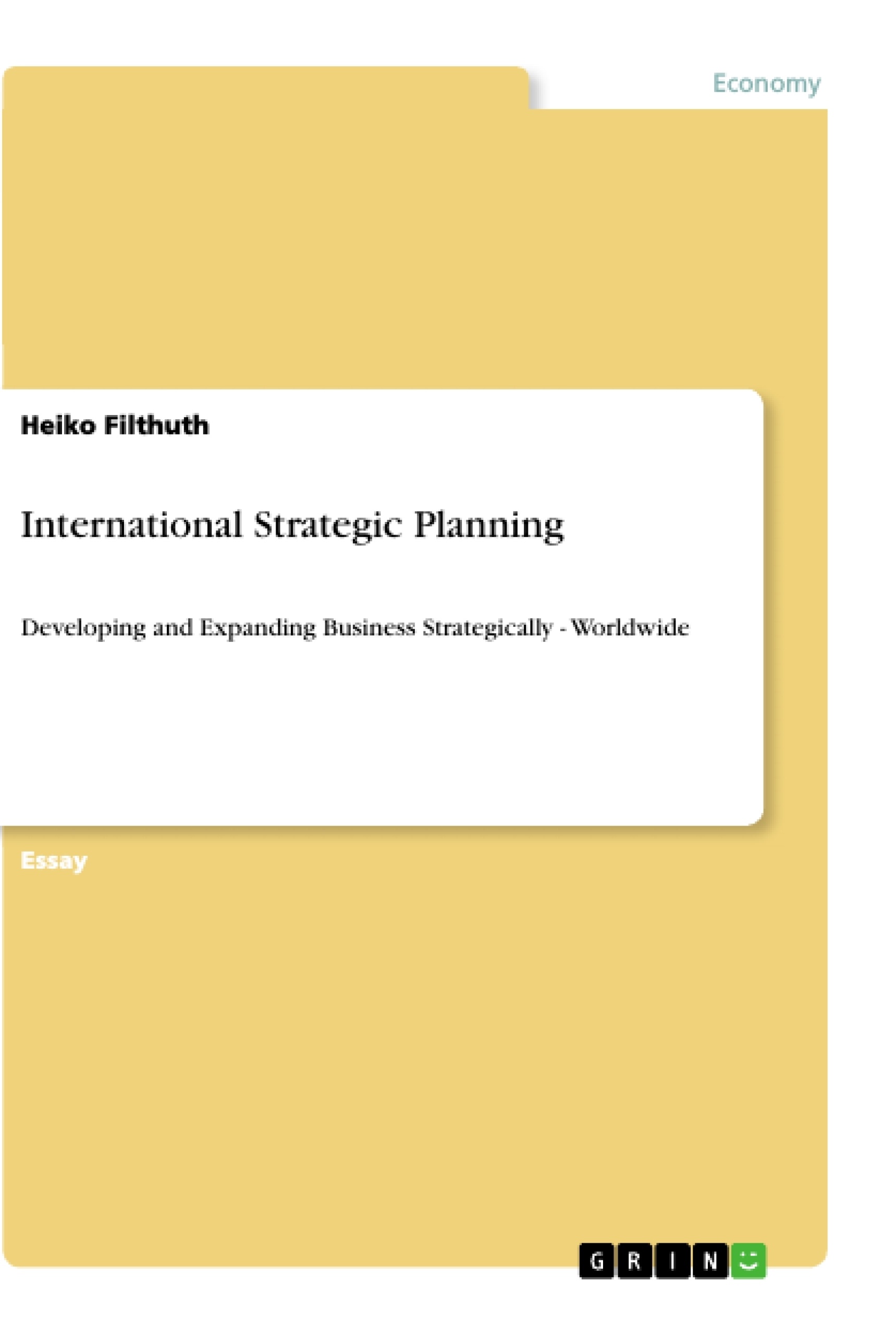Once a business starts considering going international a thorough strategic consideration of the target markets is advisable to gain an idea of risks and opportunities involved (Haines, 1999). This essay considers the international economic development from a 2013-perspective. It discusses and evaluated how markets around the world work and what to consider when planning strategic business approached into them. The insight convers aspects such as economical perspectives, business habits, and particularities of the people. It considers many countries, including those in Europe, but is mainly written from a European perspective.
Inhaltsverzeichnis (Table of Contents)
- The Economy in 2013
- Different aspects of strategic planning
- Marketing
- Investments
- Employment
- Regionality
- Culture
- Freedom
- Planning a Business Venture in 2013
- Strategic Business Planning for Asia
- Areas of Strategic Consideration
- China
- India
Zielsetzung und Themenschwerpunkte (Objectives and Key Themes)
This essay examines the process of international strategic planning, focusing on the global economic landscape in 2013. It explores key aspects that companies should consider when venturing into international markets, including marketing, investment, employment, regionality, culture, and economic freedom.
- The importance of understanding the global economic environment for strategic planning
- The various aspects of international strategic planning, such as marketing, investments, and culture
- The challenges and opportunities presented by different geographic regions, particularly in Asia
- The significance of cultural considerations and the need for adaptation in international business
- The role of economic freedom and its implications for international business ventures
Zusammenfassung der Kapitel (Chapter Summaries)
The essay begins by examining the global economic situation in 2013, noting the slow recovery from the market downturn and highlighting key developments in the US and emerging markets. It then delves into six critical aspects of international strategic planning: marketing, investments, employment, regionality, culture, and freedom. Each section provides insights and recommendations for companies considering international ventures.
The chapter on marketing outlines eight steps for successful market entry, emphasizing the importance of building trust, understanding customer needs, and having a local presence. The investment chapter focuses on foreign direct investment (FDI) and its implications for different sectors, highlighting the need for transparency, diversity in labor, and social responsibility. The employment chapter discusses the importance of developing a qualified workforce in emerging markets, emphasizing the need for quality jobs and improved labor standards.
The regionality chapter emphasizes the importance of considering regional market dynamics, highlighting the increasing significance of interregional networks and trade agreements. The culture chapter underscores the influence of cultural factors on international business communication, emphasizing the importance of adapting websites and other communication materials to different cultural contexts. The freedom chapter defines economic freedom and its role in international strategic planning, highlighting the importance of individual empowerment and freedom of choice.
The essay concludes by providing a framework for planning an international business venture, highlighting the need to consider market potential, cultural factors, and the best approach for market entry. It then focuses on strategic considerations for doing business in Asia, particularly China and India.
Schlüsselwörter (Keywords)
International strategic planning, global economy, market analysis, marketing, investments, foreign direct investment (FDI), employment, labor standards, regionality, culture, economic freedom, China, India, Asia.
- Quote paper
- Heiko Filthuth (Author), 2017, International Strategic Planning, Munich, GRIN Verlag, https://www.grin.com/document/541352




